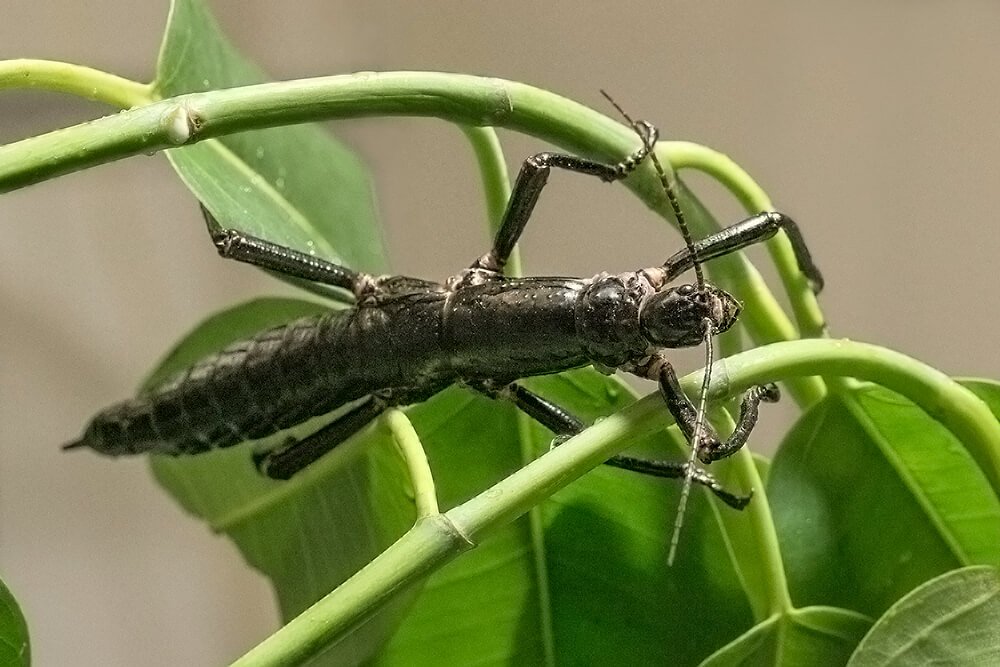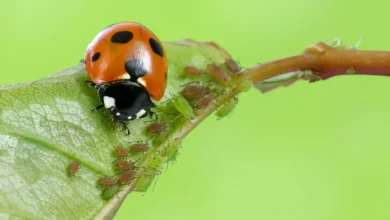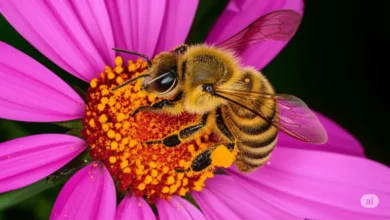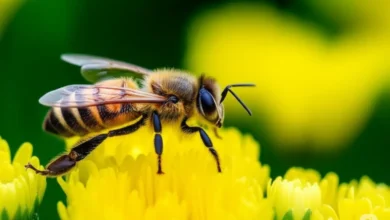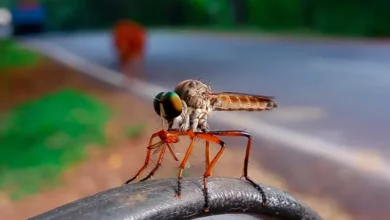Lord Howe Island Stick Insect: The World’s Rarest Insect
Introduction
The Lord Howe Island Stick Insect (Dryococelus australis), also known as the “Tree Lobster,” is one of the rarest and most remarkable insects in the world. Once thought to be extinct for nearly 80 years, this fascinating creature made a miraculous comeback, earning it the nickname “Lazarus of the insect world.”
In this article, we explore its discovery, near-extinction, rediscovery, and ongoing conservation efforts, along with fascinating facts about its biology and behavior.
1. Physical Description
-
Scientific Name: Dryococelus australis
-
Size: Up to 6 inches (15 cm) long—one of the heaviest flightless stick insects.
-
Appearance:
-
Thick, cylindrical body resembling a lobster.
-
Shiny exoskeleton in dark brown or black.
-
Males are slimmer; females are bulkier with strong legs for climbing.
-
-
Unique Traits:
-
No wings (flightless).
-
Nocturnal (active at night).
-
Emits a defensive musky odor when threatened.
-
Image: A rare adult Lord Howe Island Stick Insect clinging to a branch.
2. Habitat & Natural Range
-
Native Habitat: Lord Howe Island (a small volcanic island between Australia and New Zealand).
-
Preferred Environment:
-
Lush forests with Melaleuca and Pandanus trees.
-
Spent days hiding in tree hollows and feeding at night.
-
-
Current Wild Population: Critically Endangered (only a few dozen on Ball’s Pyramid).
3. The Mystery of Its Near-Extinction
Why Did It Disappear?
-
1918: Black rats arrived on Lord Howe Island via a shipwreck.
-
1920: The last wild stick insect was seen—declared extinct by 1930.
Rediscovery: A Scientific Miracle
-
1964: Dead specimens found on Ball’s Pyramid (a rocky islet 14 miles away).
-
2001: A team of researchers discovered 24 live individuals clinging to a single bush.
-
2003: A breeding program began at Melbourne Zoo to save the species.
4. Breeding & Conservation Efforts
Captive Breeding Success
-
Melbourne Zoo has bred thousands of stick insects since 2003.
-
Challenges:
-
High mortality rate in early stages.
-
Need for specific temperature and humidity.
-
-
Reintroduction Plans:
-
Eradicating rats from Lord Howe Island (planned for 2024).
-
Hoping to release captive-bred insects back into the wild.
-
Why Is Conservation Important?
-
A keystone species for its ecosystem.
-
Helps scientists understand insect evolution and survival strategies.
5. Fascinating Facts
✅ Nicknamed “Tree Lobster” due to its thick, lobster-like exoskeleton.
✅ Strictly Nocturnal—only active at night to avoid predators.
✅ Parthenogenesis Possible—females can reproduce without males (though rare).
✅ Strong Maternal Instinct—females curl around eggs to protect them.
6. How Can You Help?
-
Support wildlife conservation organizations like Melbourne Zoo.
-
Spread awareness about invasive species’ dangers.
-
Donate to Lord Howe Island habitat restoration projects.
SEO Meta Description:
Discover the Lord Howe Island Stick Insect, the world’s rarest insect once thought extinct. Learn about its rediscovery, conservation, and unique biology in this detailed guide.
SEO Keywords:
-
Lord Howe Island Stick Insect
-
Dryococelus australis
-
Rarest insect in the world
-
Tree Lobster insect
-
Ball’s Pyramid rediscovery
-
Endangered stick insects
-
Melbourne Zoo breeding program
-
Insect conservation
Conclusion
The Lord Howe Island Stick Insect is a true survivor, defying extinction against all odds. Thanks to dedicated conservationists, this incredible species has a second chance at survival. However, the fight isn’t over—continued efforts are needed to ensure its return to the wild.
Would you like to know more about other rare insects or conservation programs? Let us know in the comments!

